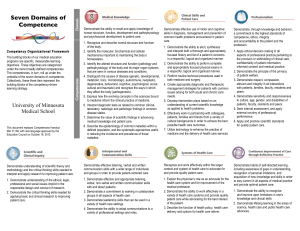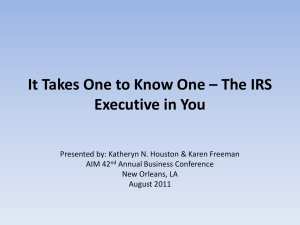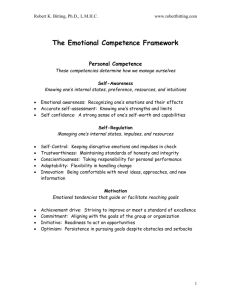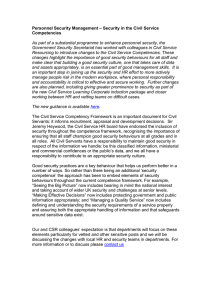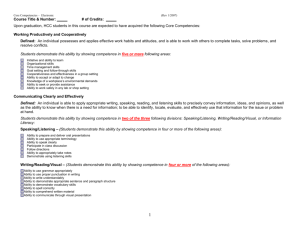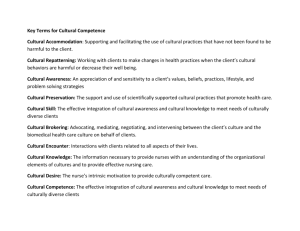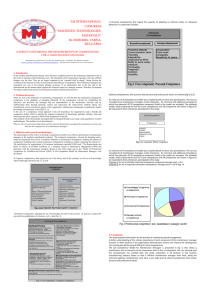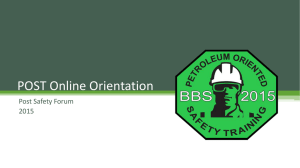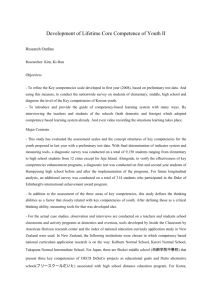Higgs and Rowland
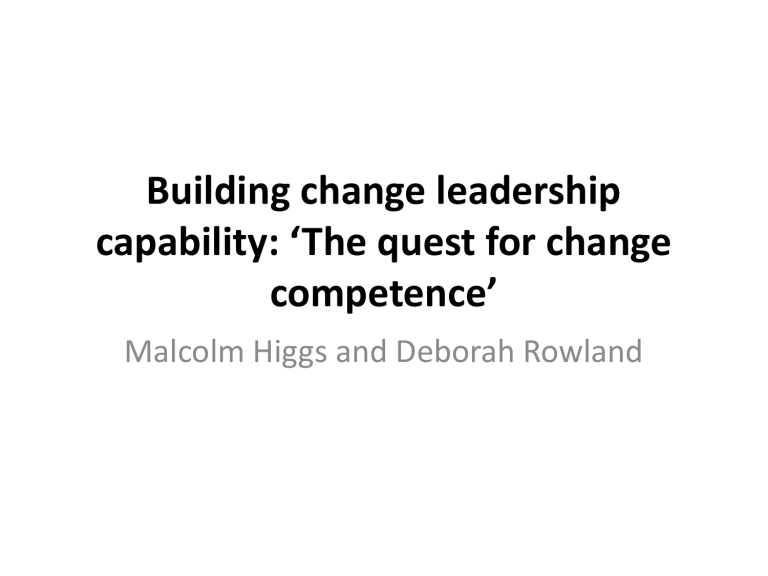
Building change leadership capability: ‘The quest for change competence’
Malcolm Higgs and Deborah Rowland
Two Key Research Questions
• 1. How can we ensure that we become better at implementing change?
• 2. What type of people do we need to lead an effective change effort?
BACKGROUND
• Almost no major corporations are free from the challenge of developing and implementing successful strategies for managing change (Kotter,
1994; Senge et al., 1999; Carnall, 1999)
• Within the leadership focused group Senge et al.
(1999) identify differing range leadership roles.
These are: (1) executive leaders: (2) local line leaders; and (3) network leaders. The roles performed by each of these are seen as distinctly different, but nevertheless valuable in the change process.
Change Competencies
• Marcus and Pringle (1995)
– 1. change mastery
– 2. managing resistance
– 3. appetite to learn
– 4. influence without authority
Buchanan and Boddy (1992)
– 1. sensitivity to key personnel changes and their impact on goals
– 2. clarity in specifying goals and defining the achievable
– 3. flexibility in responding to change and risk taking
– 4. team building
– 5. networking
– 6. ambiguity tolerance
– 7. communication skills
– 8. interpersonal skills
– 9. personal enthusiasm
– 10. stimulating motivation and commitment in others
– 11. selling plans and ideas to others
– 12. negotiating with key players for resources and change
– 13. political awareness
– 14. influence skills
– 15. helicopter perspective
Roles of Human Resources in change
• Ulrich and Yeung (1989)
– 1. helping to focus individual attention on organizational mind-sets
– 2. facilitating strategy implementation
– 3. building change capability
Some Important Questions Need to
Be Considered for Change
• What are the competencies of change leaders which will enable change to be implemented effectively?
• How do these relate to change processes and stages?
• How may these competencies be assessed and developed?
The Case Study
• Introduction
– The organization presenting the problem asked the authors to assist in developing a change competence framework, and program for developing change leaders, which would address the problems they faced in making change happen.
– An action research approach adopted
Case Situations
• Industry over-capacity in manufacturing was putting significant pressure on margins
• An expansion into retailing was requiring a different way to run the business
• Customer developments in another of their business sectors was requiring a more global approach to the market
• The organization needed radical realignment to meet these new realities
– an integrated global structure for manufacturing, marketing and support services
– local dedication to sales and the customer, new skills and capabilities to lead in a more ‘virtual’ and flatter organization
– a change in the mindset and behaviors of people from ‘serving the hierarchy’ to a focus on ‘speedy implementation and innovation at the frontline’
The Change
• The initial accountability for change advocacy
– HR function
– The HR leadership also decided that they would need some external assistance
– They wanted to commission some research which would lead to the development of a set of change leadership competencies
• The initial research quest
– The task was to identify
• 1. What are the attitudes, skills and behaviors that make a difference in leading change?
• 2. How can a range of competence levels be established, which lead to world class, or role model standard?
• 3. How can these be clustered into a simple yet robust framework?
The literature search
14 clusters of related behaviors
The Approach of The Case Study
• Three-tier behaviorally anchored scale for 30 indicators

